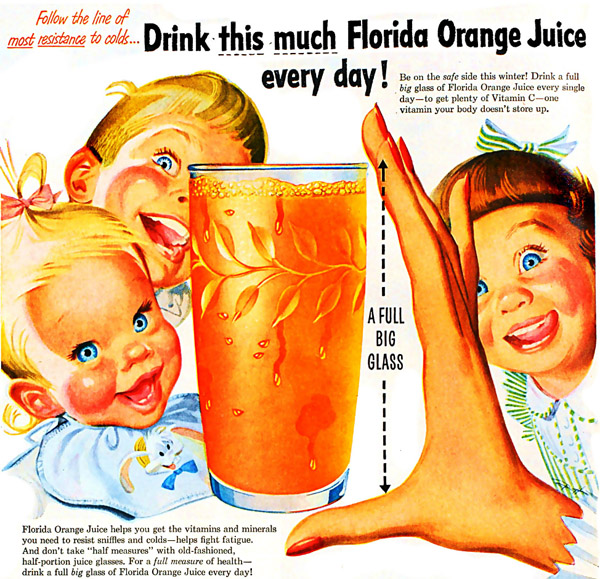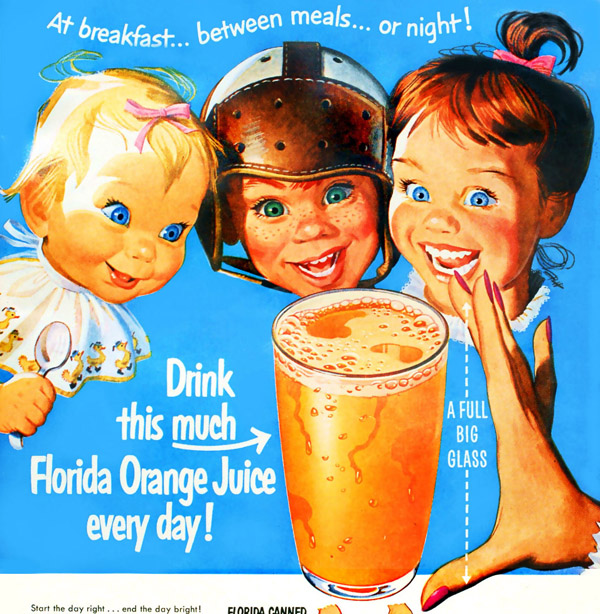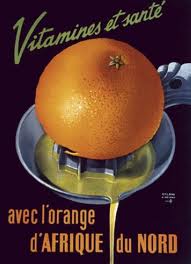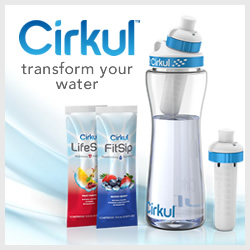 Is orange juice natural? It is often served with breakfast! Right? We drink it thinking we are getting lots of Vitamin C. When I was growing up I was told that it was even better for my health to drink the orange juice with the pulp. I hated the pulp, and avoided orange juice like it was spinach. As it turns out it may have been a good thing hiding from that orange liquid!
Is orange juice natural? It is often served with breakfast! Right? We drink it thinking we are getting lots of Vitamin C. When I was growing up I was told that it was even better for my health to drink the orange juice with the pulp. I hated the pulp, and avoided orange juice like it was spinach. As it turns out it may have been a good thing hiding from that orange liquid!
When I consult with my client’s we talk about orange juice. Yes, even the kind with pulp added! I wanted to share with you what we talk about. I ask them, “Can you eat 6 to 8 oranges at one sitting?” I get the same answer, “NO!” And you know what? I bet you can’t either. Now we are talking about eating the whole pealed orange. Somewhere around the third orange you will not be feeling too good. If I kept pushing you to eat the oranges I may end up with an orange upside the head or some choice words, humm… maybe?
Four to Six Oranges at Once!
My next question is how fast can you drink that 12 oz glass of orange juice? Most tell me not long at all, just seconds. Stop right there! If you can drink the equivalent of 6 to 8 oranges, why can’t you eat them? Right. You are not eating all the pulp, fiber or pectin. That nasty pulp that is hiding the wonderful sweet treasure. But just think about it, “Is it natural?” I mean right to drink all that juice at once?
 I hear you saying, “Come on. Orange juice is healthy. We have seen the ads for years.” A 12 oz glass of orange juice contains 39g of carbohydrates. Guess what a 12 oz coke contains? 40g of carbohydrates! The Coke wins by 1g, so it must be worse, (In this comparison Coke and Tropicana HomeStyle Orange Juice were used).
I hear you saying, “Come on. Orange juice is healthy. We have seen the ads for years.” A 12 oz glass of orange juice contains 39g of carbohydrates. Guess what a 12 oz coke contains? 40g of carbohydrates! The Coke wins by 1g, so it must be worse, (In this comparison Coke and Tropicana HomeStyle Orange Juice were used).
That is a lot of sugar! But it gets worse! That sugar is fructose, which has to be metabolized by the liver. And when the liver metabolizes this high about of fructose it creates fat in the liver. This can lead down the path to nonalcoholic fatty liver disease. Years ago, fatty liver disease was an issue with alcoholics. Today it can be an issue with anyone who regularly consumes soda, fruit juices, agave nectar and high fructose corn syrup beverages for a few decades. Take your pick; they all contain large amounts of sugar. It does not matter if it is 100% fruit juice or 10%, they both contain about the same amount of sugar.
Flavor Pack?
There is another side to the high sugar orange drink. Ever wondered how each glass of your favorite orange juice tastes the same time after time. The answer is called a flavor pack. We are talking about the “100% pure” and “not from concentrate” kind of orange juice that comes in cartons and jugs. What is a flavor pack?
Well… first lets ask why do we have to add flavor to orange juice.
It is a common practice to store pasteurized orange juice in a process called, “deaeration”. This process involves stripping the juice of oxygen so it does not oxidize and it can be stored in massive million gallon tanks for over a year. This stripping of oxygen from the juice removes its flavor providing chemicals, not to mention what the destructive process of pasteurization does to the vitamins. To say this stored orange juice is deficient and tastes flat would be an understatement. Just because it says “not from concentrate”, does not mean it is not processed.
Dior and Calvin Klein to the Rescue
Now lets get back to flavor packs! Since this stored juice is deficient in many ways, juice companies hire flavor and fragrance companies, yup you guessed it! The same ones that formulate Dior and Calvin Klein perfumes. They engineer these flavor packs to add back in the removed and destroyed components of the processed storage. You will not see these flavor packs on any label since they are technically derived from orange essence and oil, and are considered natural, even though they have been transformed to resemble nothing found in nature according to people inside the orange juice industry. (We will talk more about this “natural” term next week.)
Ethyl Butyrate
Next time you are in the market try smelling a fresh orange or get one and taste it. You will notice that it does not taste anything like the processed orange juice in the carton. Why? It is all thanks to ethyl butyrate… what is that? Ethyl butyrate is a chemically produced artificial flavoring. You have experienced ethyl butyrate in many fruit juices, alcoholic beverages, as a solvent in perfumery products, and as a plasticizer for cellulose. Yum, Yum!
Ethyl butyrate is one of the most commonly used chemical flavors, and is found in high concentrations in orange juice. It is found in other flavorings such as cherry, pineapple, mango, guava, bubblegum, peach, apricot, fig, and plum. It is a cheap chemical, in fact one of the cheapest which is why it is found in so many products. It is on the EPA hazardous materials list, but somehow it is considered safe for food products. We will not go into how that happened.
Can You Fix Orange Juice?
Yes, there is orange juice sold that does not contain ethyl butyrate… most organic orange juice brands. Here are some brands that report they do not use flavor packs and are ethyl butyrate free: Kirkland (Costco), Trader Joe’s, Whole Foods 365 Brand, but they are still pasturized.
 You can always try real fresh squeezed. Look for fresh squeezed orange juice at your market or better yet get some oranges and make your own at home. It will not be as orange-y in color or taste and it will still have lots of sugar. But if you drink it in moderation… Personally, I mix real, fresh squeezed orange juice half and half with water for a nice orange flavored water drink with only half the sugar. 🙂
You can always try real fresh squeezed. Look for fresh squeezed orange juice at your market or better yet get some oranges and make your own at home. It will not be as orange-y in color or taste and it will still have lots of sugar. But if you drink it in moderation… Personally, I mix real, fresh squeezed orange juice half and half with water for a nice orange flavored water drink with only half the sugar. 🙂
Fresh is Best!
Source:
Squeezed: What You Don’t Know About Orange Juice, by Alissa Hamilton, ISBN 978-0300164556
Toxinless.com
 Email To A Friend
Email To A Friend Print This Page
Print This Page


Speak Your Mind